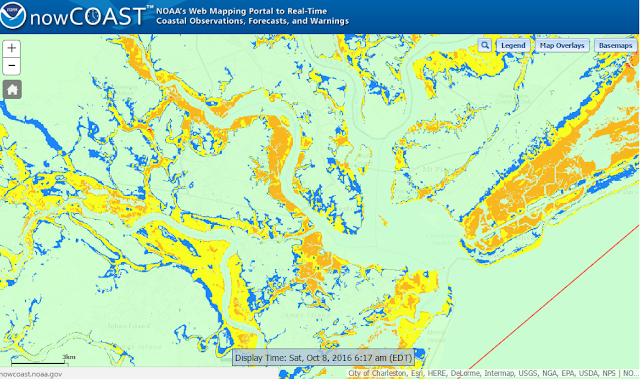Matthew is now a Cat-2 storm with sustained winds in the 30s and on-shore gusts into the 70s. Several storm surge records have been re-set north of Jacksonville.
There is still cause for serious concern depending on how riverine flooding and storm surge interacts with the urban network around Charleston and North Charleston later today. (See impact projections below. This includes intertidal effects. Updates from NOAA at NOWcoast.) Damage to the electrical distribution grid is widespread and will require significant time to restore.
Looking at the results in Haiti and Cuba, it is clear Matthew could have been much worse. A few degrees more turn Northwest with a a high-power direct hit on Miami and this could have been one of the most consequential hurricanes in history. But in terms of supply chain resilience, the effects on the US southeast are quickly recoverable disruptions.
According to CCJ:
Load transactions on DAT’s board show a surge in rates is already underway, particularly into and out of the Raleigh area, which is situated close to the intersection of I-95 and I-40. “It looks like the flooding is making it harder to find an available truck in the markets just south of Raleigh,” said a DAT analyst. “So far this week, most of the loads posted on the load board that are bound for Raleigh are coming from Atlanta, and the Atlanta to Raleigh lane is up 18 cents in the past seven days.”
Truckstop.com, another load board tracking post-Matthew rates, said rates in storm-impacted states jumped last week ahead of the storm. Truckstop.com’s Roxanne Bullard said rates jumped “dramatically” last weekend, but have since fallen below the rolling 30-day average. “It will be interesting to see once all interstates open back up if that will change,” she said.At least twenty have died in North Carolina as a result of flooding. The situation in Haiti is beyond description.



No comments:
Post a Comment